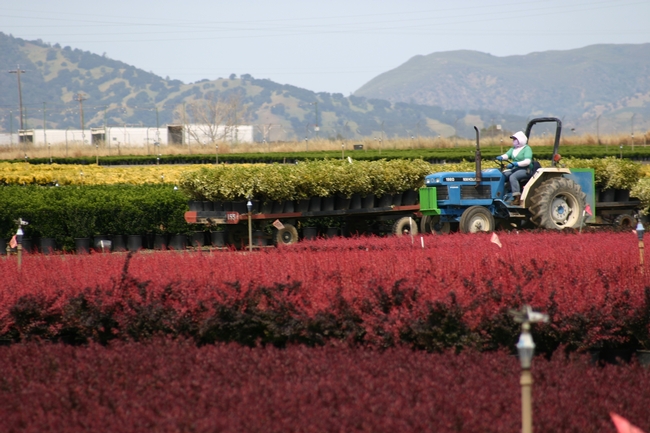
As California legislators focus on nitrogen use in agriculture and its ability to contaminate groundwater, potential regulation on fertilizer use will require solid information on the amount of fertilizer used by California farmers, and the extent to which that usage contributes to environmental pollution. A new study published in California Agriculture evaluates trends in fertilizer use by California's major crops. It also shows that major deficiencies in data collection need to be addressed in order to develop effective policies regarding fertilizer use.
The publication is one of the first peer-reviewed articles to emanate from the California Nitrogen Assessment (an ongoing project at UC Davis). Assessment research documents that while there are many pathways through which nitrogen can enter the environment, inorganic fertilizer use is responsible for the largest fraction of new nitrogen introduced into California annually. Currently, over 600,000 tons of nitrogen fertilizer are sold in the state each year.
Information on fertilizer sales, however, is not an accurate indicator of fertilizer application, and authors found that fertilizer use data is not easy to come by — either because it is not tracked at relevant scales or because data sources are inconsistent.
"We found ourselves with very limited information to understand an issue with sweeping implications for California agriculture,” says Todd Rosenstock, the article's lead author. "We dug deep to create an accurate picture of fertilizer use in the state, but the remaining gaps will require attention.”
To estimate the amount of nitrogen applied to different crops around the state, authors aggregated data from different sources, including grower surveys and University of California studies, and show application rates for 33 of California's major crops.
While nitrogen fertilizer use on a crop-by-crop basis has risen over the last three decades, this increase has been more modest than fertilizer sales suggest. Between 1973 and 2005, fertilizer sales increased 31 percent, but nitrogen application rates increased on 25 percent across the 33 crops studied. Both data sets reflect increased nitrogen application and a shift to growing more nitrogen-intensive crops.
For many crops, nitrogen use increases have been accompanied by well-recorded yield increases — at rates that show nitrogen's benefit, and also suggest that farmers may be becoming more agronomically nitrogen-efficient, requiring less nitrogen per unit of production.
"In the absence of good information, we could do the wrong thing,” says Tom Tomich, co-author of the article and director of the Agricultural Sustainability Institute at UC Davis.
"Regulation without supporting data could fail to address the heart of the problem, or could damage agriculture,” says Tomich, who is also professor in the Department of Environmental Science and Policy at UC Davis, W.K. Kellogg Endowed Chair in Sustainable Food Systems and director of Sustainable Agriculture Research and Education Program. "Better information on nitrogen use is indispensable to collaborative development of effective solutions that can increase nitrogen use efficiency and save farmers money.”
The article makes recommendations on how data could be better compiled to improve our understanding of statewide trends in fertilizer use. To read the article, visit http://ucanr.edu/calagnassessment.
This article is part of an ongoing study, the California Nitrogen Assessment (CNA), a project of the Agricultural Sustainability Institute at UC Davis and UC Sustainable Agriculture Research and Education Program. The CNA reviews existing data on nitrogen to draw connections between nitrogen use, surplus, and established environmental and human health effects of excess nitrogen. The CNA is a stakeholder-driven assessment that seeks public input on its research and products. To learn more about the California Nitrogen Assessment, visit http://nitrogen.ucdavis.edu.